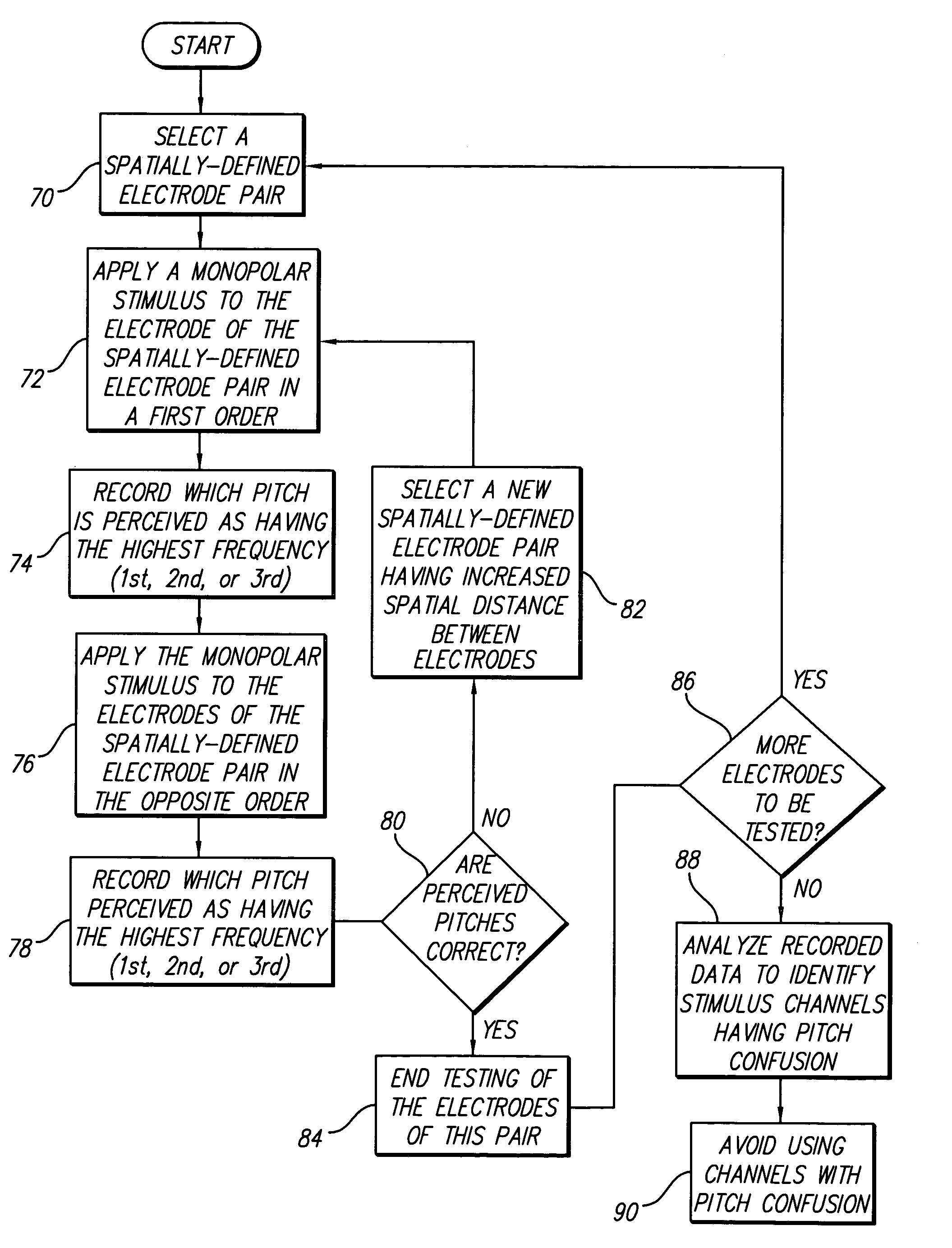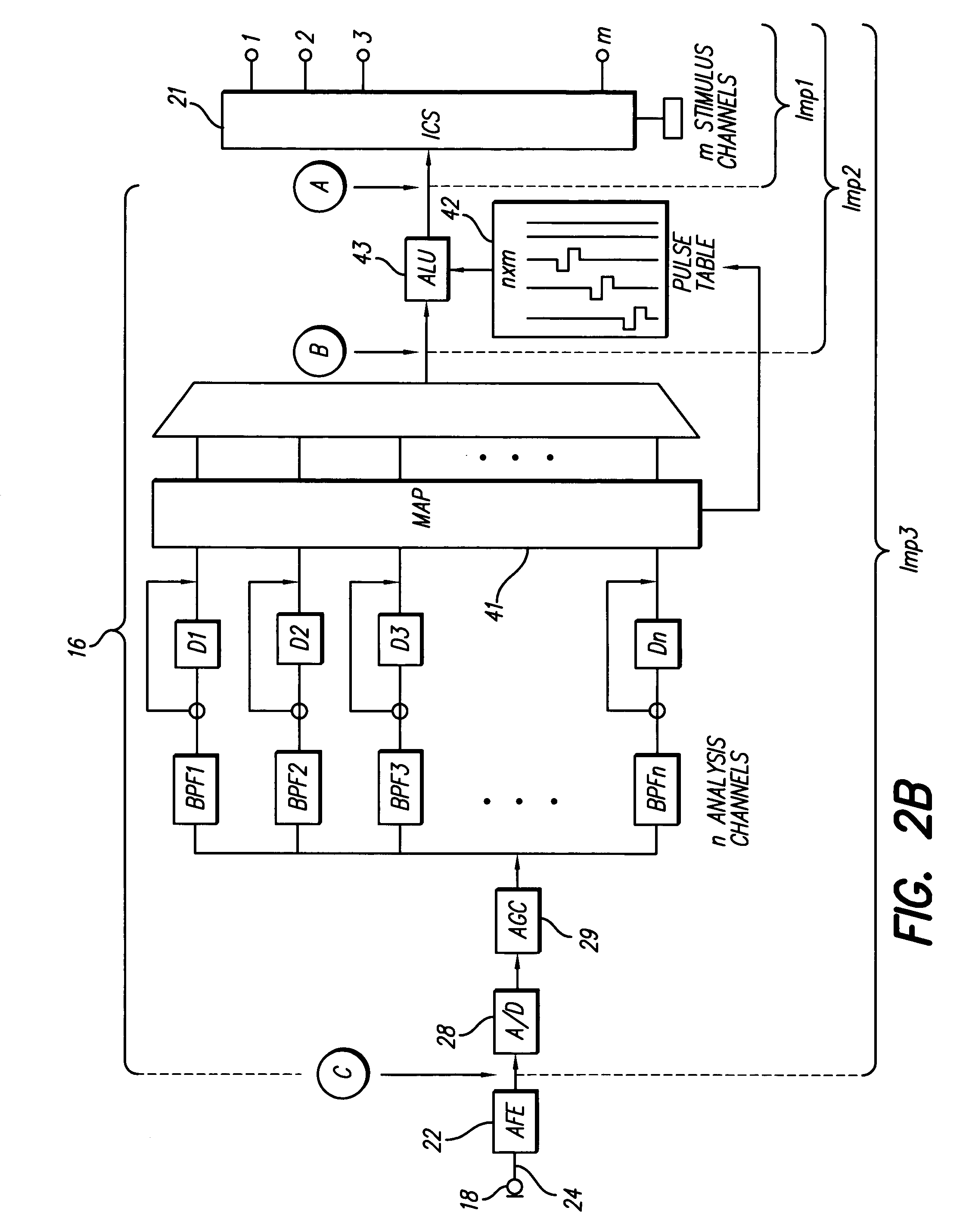Adaptive place-pitch ranking procedure for optimizing performance of a multi-channel neural stimulator
a neural stimulator and place-pitch ranking technology, applied in the field of neural stimulators, can solve the problems of increasing complexity of the cochlear stimulation system, increasing the complexity of the bionic ear implant, and the external wearable processor (or speech processor), and achieve the effect of completing in a relatively short period of tim
- Summary
- Abstract
- Description
- Claims
- Application Information
AI Technical Summary
Benefits of technology
Problems solved by technology
Method used
Image
Examples
Embodiment Construction
[0036]The following description is of the best mode presently contemplated for carrying out the invention. This description is not to be taken in a limiting sense, but is made merely for the purpose of describing the general principles of the invention. The scope of the invention should be determined with reference to the claims.
[0037]The present invention—a place-pitch ranking procedure that identifies when pitch confusion exists between neighboring channels of a multi-channel implant system so that use of such channels can be avoided or minimized—is described primarily in connection with FIGS. 3–6. The description of FIGS. 1, 2A and 2B, presented first, provides an overview of a representative cochlear implant system that may be used to practice the place-pitch ranking procedure described in connection with FIGS. 3–6. As such, it is to be emphasized that FIGS. 1, 2A and 2B do not describe the invention, per se, but rather describe a hardware / software platform on which the inventio...
PUM
 Login to View More
Login to View More Abstract
Description
Claims
Application Information
 Login to View More
Login to View More - R&D
- Intellectual Property
- Life Sciences
- Materials
- Tech Scout
- Unparalleled Data Quality
- Higher Quality Content
- 60% Fewer Hallucinations
Browse by: Latest US Patents, China's latest patents, Technical Efficacy Thesaurus, Application Domain, Technology Topic, Popular Technical Reports.
© 2025 PatSnap. All rights reserved.Legal|Privacy policy|Modern Slavery Act Transparency Statement|Sitemap|About US| Contact US: help@patsnap.com



